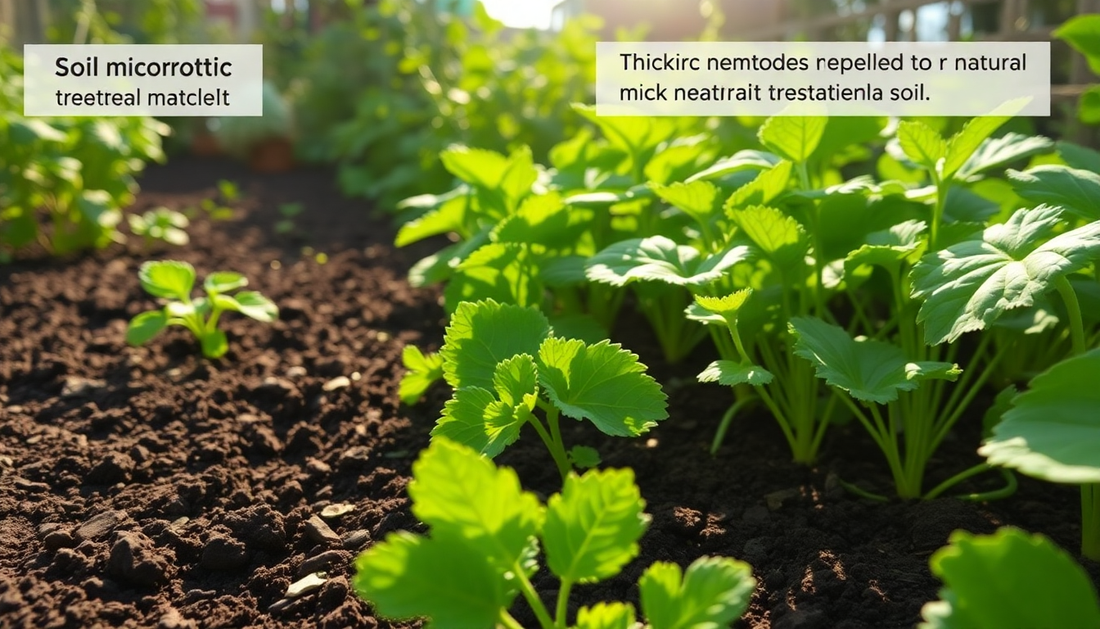
Banish Nematodes: Reviving Your Vegetable Garden's Health
As a passionate gardener, I know the frustration of dealing with nematode infestations in vegetable gardens. These microscopic worms can wreak havoc on your plants, stunting growth, reducing yields, and even causing complete crop failure. But fear not, my fellow green thumbs! In this comprehensive guide, we'll explore the best strategies to get rid of nematodes and restore the vitality of your vegetable garden.
Understanding Nematodes
Nematodes are tiny, unsegmented roundworms that live in the soil and feed on plant roots. They come in various species, some of which are beneficial, while others can be devastating to your garden. The most common and problematic nematodes for vegetable growers are root-knot nematodes, lesion nematodes, and cyst nematodes.
These pests can be challenging to detect, as the initial signs of their presence are often subtle. Stunted growth, yellowing leaves, and reduced yields may be the first indications that your plants are under attack. However, the real damage lies beneath the soil, where nematodes feed on the roots, causing galls, lesions, and other deformities.
Identifying Nematode Infestations
Diagnosing a nematode problem can be tricky, as the symptoms can mimic other plant diseases or nutrient deficiencies. Here are some telltale signs to look out for:
Root Galls and Lesions
Examine the roots of your plants closely. If you notice small, knotty growths or discolored, pitted areas, it's a strong indication of a nematode infestation.
Stunted Growth
Nematodes can inhibit the uptake of water and nutrients, leading to stunted, wilted, or yellowing plants, even in the absence of other obvious signs.
Reduced Yields
As nematodes feed on the roots, they disrupt the plant's ability to absorb essential nutrients and water, resulting in lower crop yields.
If you suspect a nematode problem, consider sending a soil sample to a reputable laboratory for analysis. This will help you identify the specific species of nematodes present and develop a targeted treatment plan.
Natural Nematode Control Strategies
Fortunately, there are several effective, eco-friendly methods to combat nematodes in your vegetable garden. Let's explore some of the best natural approaches:
Crop Rotation
Rotating your vegetable crops can disrupt the nematode life cycle and starve them of their preferred food sources. Choose crops that are less susceptible to nematode damage, such as marigolds, mustard, or sorghum-sudangrass.
Cover Cropping
Planting cover crops like sorghum-sudangrass, marigolds, or certain types of radishes can release nematicidal compounds into the soil, effectively reducing nematode populations.
Soil Solarization
This technique involves covering moist soil with a clear plastic tarp, trapping the sun's heat and killing nematodes, as well as other soil-borne pests and pathogens.
Organic Amendments
Incorporating organic matter like compost, manure, or green manure crops can improve soil health and encourage the growth of beneficial microorganisms that compete with or prey on nematodes.
Biological Controls
Certain microorganisms, such as the fungus Paecilomyces lilacinus or the bacterium Bacillus firmus, can be used as biological control agents to target and suppress nematode populations.
Natural Nematicides
Some plant-derived compounds, like neem oil, cinnamon, or garlic extracts, have been shown to have nematicidal properties and can be used as natural soil treatments.
Preventive Measures
In addition to the control strategies mentioned above, there are several proactive steps you can take to prevent nematode infestations in your vegetable garden:
Maintain Soil Health
Ensure your soil is rich in organic matter and supports a diverse microbial community. Healthy, well-balanced soil is less susceptible to nematode problems.
Use Nematode-Resistant Varieties
Some vegetable cultivars have been bred to be more resistant or tolerant to nematode damage. Research and choose nematode-resistant varieties when possible.
Practice Good Sanitation
Clean garden tools, equipment, and footwear to prevent the spread of nematodes from one area of your garden to another.
Monitor and Test Regularly
Regularly inspect your plants for signs of nematode damage and consider periodic soil testing to stay ahead of any potential infestations.
By implementing a combination of these natural control methods and preventive measures, you can effectively manage nematodes and keep your vegetable garden thriving. Remember, patience and persistence are key when it comes to tackling these persistent pests.
Conclusion
Nematodes can be a formidable foe in the vegetable garden, but with the right knowledge and strategies, you can reclaim the health and productivity of your soil. By embracing natural, eco-friendly approaches, you'll not only rid your garden of these microscopic pests but also cultivate a vibrant, sustainable growing environment for your plants to thrive.
So, roll up your sleeves, get your hands dirty, and let's work together to banish nematodes and revive the lush, bountiful vegetable garden of your dreams. Happy gardening!







No comments